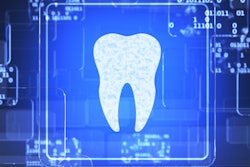
When it comes to the adoption of telehealth in the dental industry, the COVID-19 pandemic served as more of an accelerant than a revolution. Teledentistry has steadily grown over the past decade, and once COVID-19 spread across the world, shutting down dental offices along with everything else, more dental practices jumped on board an already moving train.
According to a 2020 report from the CareQuest Institute for Oral Health, 34% of dental providers in the U.S. see patients via telehealth platforms or plan to do so in the near future. These numbers will likely trend upward since patients generally report satisfaction from virtual visits as a supplement to in-person care.
While not replacing the important benefits of face-to-face visits in the dental chair, teledentistry can offer important benefits to patients, improve communication, and reduce traffic in the office, while generating alternative revenue streams and convenient methods for progress checks, emergency care, readiness assessments, and more.
Adapting to teledentistry during the pandemic
My practice, Diamond Braces, is a multioffice orthodontic practice based in the New York City area. As we serve an area that was hard-hit by the early pandemic, we were forced to adapt quickly to a rapidly changing crisis, while still delivering comprehensive care to our thousands of patients in ongoing orthodontic treatment.
 Dr. Oleg Drut.
Dr. Oleg Drut.In April 2020, our web development team rapidly built a personalized, secure online platform from which our teams could administer virtual dental care. We provided these services at no cost at the beginning of the pandemic and gradually incorporated the platform into our regular billed services. Guidance on reimbursement quickly arrived from Medicare and the ADA, which helped to streamline the billing process.
As our team adapted to the virtual platform and pandemic restrictions allowed for in-person care to resume, we were able to optimize our services to provide superlative levels of care through teledentistry and in-office visits. Over the past few months, we've worked with doctors, hygienists, assistants, and patients to provide the highest quality of care through our telehealth platform, ensuring that our patients' care experience is enhanced by our digital services, without compromising the in-office experience. I'm pleased to share our experience with my colleagues in the industry.
One of the greatest challenges to overcome with teledentistry is, of course, maintaining the doctor-patient relationship. In any dental specialty, establishing a relationship of trust and communication with the patient is a primary determinant of positive outcomes. Orthodontia is no exception; in fact, due to the lengthy treatment times and consistent visits, maintaining a strong relationship between patient and doctor is key to treatment success.
Teledentistry in practice
In our practice, we found telehealth improved the patient relationship by establishing another avenue of communication. Frequent communication helps set patients (and for minor patients, their parents or caregivers) at ease about what to expect and what the next steps will be for treatment.
Adding a virtual platform allowed a video chat feature that appeals to younger patients and our busy, on-the-go young professionals. As "tech natives," these generations have come to expect some digital options for communication; providing video calls and virtual appointments has helped us keep our patients informed and satisfied.
Our virtual options are also improving patient outcomes by allowing us to monitor compliance virtually, which helps our team keep an eye out for any treatment issues, including poor oral hygiene or lack of expected progress. These issues can be observed via a virtual visit, which limits the time patients spend in the office while ensuring that potential problems don't go unobserved.
Keeping patients' treatment on track is key to a positive relationship: We always strive to ensure our patients have positive feelings about treatment, so close supervision helps to keep treatment progressing smoothly. Meanwhile, our patients appreciate the convenience of fewer in-office visits and the ease of a virtual visit.
We've found that younger patients even prefer virtual visits, which reduce the need to take time off school or work and limit transportation time. For tech-savvy young patients who are accustomed to connecting virtually, speaking with a doctor or dental professional in a video call is natural and comfortable. This helps our team meet our patients where they are and provide expert service in a convenient, enjoyable fashion.
Young patients aren't the only ones who appreciate virtual care, though. As more of the healthcare system moves online, older patients are quickly catching on to the appeal of a virtual visit! Virtual visits may have a lower co-pay or cost less out of pocket, which is another appealing aspect for patients.
Avoid teledentistry pitfalls
Despite its benefits, teledentistry does have potential pitfalls that need to be avoided. While virtual visits can improve communication by offering convenient, at-home service and quick messaging, it's important to continue the use of other communication methods, including phone calls, to keep up patient engagement, ensure appointments are confirmed, answer questions, and more.
Virtual and in-person care must also be properly integrated to ensure medical records are consistent, face-to-face appointments happen as needed, and communications are recorded appropriately. Patients who feel they "get lost in the jumble" will likely report less satisfaction with their care, so ensuring that systems are properly integrated will reduce the chance of information slipping through the cracks.
Finally, doctors, care managers, and anyone else delivering teledentistry should always prioritize the patient experience, just as they would in the office. A systematic review of telehealth and patient satisfaction by J.D. Power identified 10 key performance indicators (KPIs) to consider when offering virtual patient care. At the top of the list? Spending enough time with the patient, resolving the medical concerns, and following up after the visit.
If the issue cannot be resolved over a virtual visit, promptly scheduling an in-person visit is key to a positive outcome. When it comes to patient satisfaction, feeling heard, understood, and not rushed is key to success.
While delivering care remotely can seem like a good opportunity to multitask, doctors and staff should bring the same level of focus to the patient as they would in the office. Making direct eye contact through the screen, using visual cues that affirm listening and understanding, and a friendly demeanor are all critical to establishing an excellent doctor-patient relationship through teledentistry.
Like many emerging technologies, teledentistry will never be a complete substitute for in-person dental care. However, it can offer excellent benefits for your team and your patients, so long as it is delivered with intention, clarity, and careful supervision. With a properly administered virtual platform, your team can confidently provide remote dental care that gives your patients more options, saves them time and money, and keeps satisfaction high and outcomes positive.
Dr. Oleg Drut is the founder, owner, and chief clinical officer of Diamond Braces, an orthodontics practice with locations across New York, New Jersey, and Connecticut. He has 20 years of experience in management, office setup, workflow supervision, and training and mentorship of new orthodontists. He can be reached for comment at [email protected].
The comments and observations expressed herein do not necessarily reflect the opinions of DrBicuspid.com, nor should they be construed as an endorsement or admonishment of any particular idea, vendor, or organization.



















